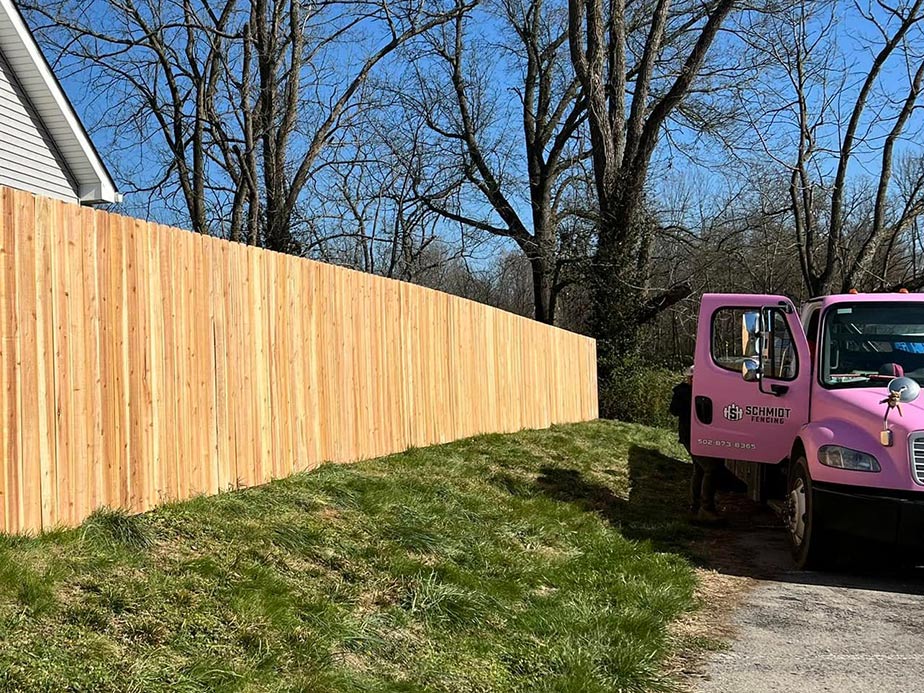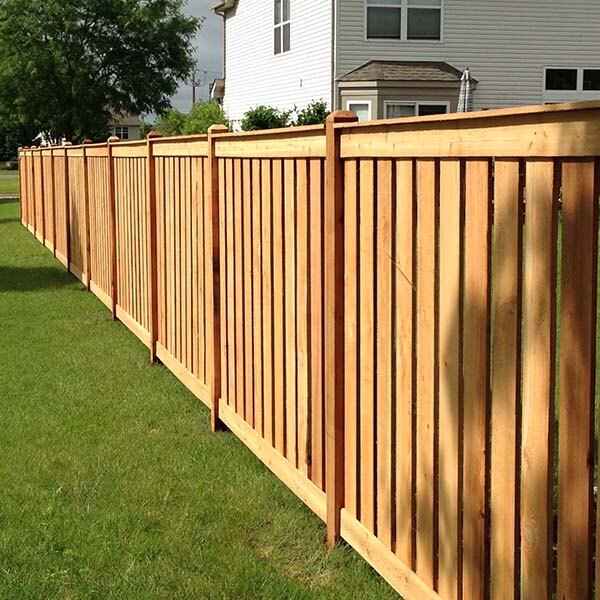How to Determine Typical Issues That Require Immediate Fencing Repair
It is critical to identify problems before they end up being bigger problems when it comes to keeping your fence. Consistently looking for indications of rotting timber, leaning panels, or corrosion can save you money and time in the long run. You could not realize just how weather and pests can endanger your fence's stability. Let's discover the common signs that show your fence requires prompt attention, so you can maintain your building safe and secure and looking its best.
Indications of Rotting Timber in Wooden Fences
Have you discovered your wood fence looking a little bit shabby? If so, it may be time to look for signs of decaying timber. Examine the base of the posts and panels for soft spots. If you press on the timber and it really feels mushy or falls apart, that's a clear indicator of rot. Next, look for staining or dark areas on the wood-- these usually signal dampness damages. Pay focus to any kind of peeling paint or surface, as this can subject the wood to further degeneration. Furthermore, a pungent, musty odor can suggest fungal growth. Do not forget to evaluate connections and joints; if they're loosened or dropping apart, the timber beneath is likely compromised. By catching these indications early, you can prevent much more extensive damage and keep your fencing standing strong. Normal maintenance is key to expanding the life of your wood fencing.
Leaning or Tilting Fence Panels
It's vital to recognize what triggered it if you've seen your fence panels leaning or turning. This issue may suggest underlying architectural damages that needs your attention. Allow's check out the usual causes and the repair work options available to get your fence back fit.

Root Causes Of Leaning Panels
When you discover your fencing panels leaning or tilting, it's frequently an indicator of underlying issues that require attending to. One usual cause is inadequate drain; excessive water can wear down the soil around the fencing posts, damaging their assistance. Another perpetrator can be solid winds or storms that press against the panels, specifically if they're not effectively secured. In addition, the natural settling of soil in time can create posts to move, resulting in a tilt. Bugs, like termites, can jeopardize the stability of wooden panels, creating them to lean as well. Poor installment practices might result in panels not being safely set, leaving them susceptible to leaning under pressure. Address these issues quickly to preserve your fencing's honesty.
Indicators of Architectural Damage
Noticing turning or leaning fencing panels can be disconcerting, as these concerns typically indicate structural damage that needs instant focus. When your fencing begins to lean, it may signal that the articles are shifting or that the dirt around them has actually eroded. Pay attention to gaps in between blog posts or panels, as these can also recommend instability. deck builder. In addition, look for splits or splintering in the wood, which can deteriorate the overall framework. It could jeopardize the honesty of the fence if you see corrosion or rust on steel elements. Remember, ignoring these indications can bring about a lot more severe damage down the line, so it's necessary to analyze the circumstance promptly and act before it aggravates
Fixing Options Available

Rust and Corrosion in Steel Fences
If you own a steel fencing, you may discover corrosion and corrosion sneaking in with time, specifically if it's subjected to dampness. These issues not just influence the appearance of your fence yet can additionally compromise its architectural stability. To determine rust, seek reddish-brown spots or spots, which show the metal is oxidizing. Deterioration can spread promptly if left without treatment, leading and damaging the fence to costly repairs.To tackle corrosion and corrosion, you need to clean the impacted areas with a cord brush and use a rust-inhibiting guide. Once the primer dries, think about painting the fencing with a weather-resistant paint to secure it further. Regular upkeep, such as checking for signs of corrosion and repairing paint as required, will certainly aid expand your fencing's lifespan. Addressing these problems quickly assures your steel fence continues to be solid and visually appealing for years to find.
Fractures and Divides in Plastic Fence

Root Causes Of Vinyl Damage
Vinyl fence is prominent for its toughness, yet it can still struggle with cracks and divides due to various aspects. One significant reason is extreme temperature level changes. It can deteriorate the material over time when vinyl increases in the warm and contracts in the cool. In addition, direct exposure to rough sunlight can bring about UV destruction, making the plastic weak. Physical effects, like click here to find out more hefty branches or unintentional collisions, can likewise create splits. Poor setup or utilizing low-grade materials can worsen these concerns. Age plays a function; older vinyl secure fencing is a lot more at risk to damage. Regular evaluations can help you recognize these variables prior to they cause considerable troubles. Take positive actions to ensure your fence continues to be undamaged and solid.
Repairing Cracks Efficiently
Although fractures and divides in your vinyl fence can be worrying, addressing them quickly can avoid additional damage and maintain the fence's appearance. Examine the dimension of the crack. For small cracks, a plastic repair work package frequently consists of sticky that can bond the edges, providing a smooth solution. Tidy the location thoroughly prior to using the glue, guaranteeing it sticks effectively. For larger divides, you could need to make use of a vinyl patch. Cut the spot to dimension, apply adhesive around the edges, and press it firmly onto the split. Permit it to treat according to the maker's directions. Normal upkeep and quick fixings can extend your fence's life-span, keeping it looking great for years ahead.
Loosened or Missing Out On Fencing Posts
Absent or loosened fence articles can undermine the security of your whole fence framework. It's vital to attend to the concern immediately if you notice any articles leaning or wobbling. Look for any type of signs of motion, as this can lead to more damages gradually. You can easily evaluate the trouble by providing each blog post a mild shake-- if it feels unsteady, it's time to take action.For missing messages, you'll need to replace them immediately to preserve your fence's stability. When you set up brand-new articles, make certain they're firmly anchored in the ground with concrete or crushed rock for included stability. If an article hangs, tighten it by including additional support or driving it deeper right into the ground.Ignoring these issues can result in bigger issues, like voids in your fence and even complete collapse. So, maintain an eye on your articles and stay proactive concerning repairs!
Damages From Climate and Natural Environment
Weather condition and natural elements can damage your fencing, leading to various types of damage that need punctual focus. Hefty rainfall can create timber to rot, making it unpredictable and weak. Snow buildup might bend or damage panels, while strong winds can root out fencing posts or create areas to lean.If you see fractures or splintering in wood fencings, it signifies drying due to extreme sunlight exposure. Steel fences can rust if protective finishings wear off, especially in seaside or damp areas.Inspect your fencing routinely after tornados or extreme weather condition to catch any kind of damages early. Attending to these issues swiftly can save you from expensive repairs down the line. Don't wait till a small trouble turns into a major one; remain proactive and keep your surround leading shape to preserve both capability and visual allure.
Pest Invasion and Termite Damages
It's necessary to act quickly to protect against additional destruction when you discover indications of bug problem or termite damages. Seek mud tubes along your fence or hollow-sounding wood, as these indicate termites are at work. You might likewise see little holes or frass, which is termite droppings appearing like sawdust. If you detect see here any of these signs, it's time to evaluate the damage.Don' t wait up until it's also late; parasites can compromise your fence's stability. Examine the surrounding area for ants or beetles, as they may be adding to the trouble. If you believe an infestation, take into consideration speaking to an insect control professional to verify and deal with the issue.Repairing or replacing affected areas of your fencing promptly not just recovers its toughness yet additionally prevents parasites from spreading out further. Remain vigilant to maintain your home protected and pest-free.
Frequently Asked Questions
Just how Commonly Should I Examine My Fence for Damage?
You should evaluate your fencing a minimum of two times a year, preferably during springtime and fall. Regular checks aid you identify damage early, conserving you money and time on repair services while preserving your property's look and protection.
Can I Repair a Fence Myself or Work With an Expert?
You can definitely repair a fencing on your own if you have the right devices and abilities. Employing a specialist assurances quality work and conserves you time, especially for complex repair services or comprehensive damages.
What Devices Are Required for Basic Fence Repair Work?
For standard fencing repairs, you'll need devices like a hammer, screwdriver, pliers, a saw, a degree, and gauging tape. deck builder. Depending upon the repair, you may additionally call for nails, screws, or replacement boards
Exactly How Much Does Fencing Repair Work Usually Expense?
Fencing repair service prices differ extensively, yet you this hyperlink can anticipate to pay in between $200 and $1,500 relying on products, labor, and degree of damages. It's wise to get several quotes for the very best deal.
When Is the Finest Time of Year for Fencing Services?
The best time for fencing repair services is throughout light weather, usually in spring or early autumn. You'll prevent severe temperature levels, making it simpler to work and guaranteeing the products established properly for lasting durability (deck builder). Observing leaning or turning fence panels can be disconcerting, as these concerns usually suggest structural damage that requires instant attention. Missing or loosened fence articles can weaken the stability of your entire fencing structure. Snow accumulation could flex or damage panels, while solid winds can uproot fence posts or create areas to lean.If you notice splits or splintering in wood fencings, it's an indicator of drying out due to intense sunlight exposure. Steel fences can corrosion if protective finishings wear off, specifically in damp or coastal areas.Inspect your fence regularly after tornados or severe climate to capture any kind of damage early. Fencing repair work prices vary extensively, yet you can expect to pay in between $200 and $1,500 depending on products, labor, and degree of damages